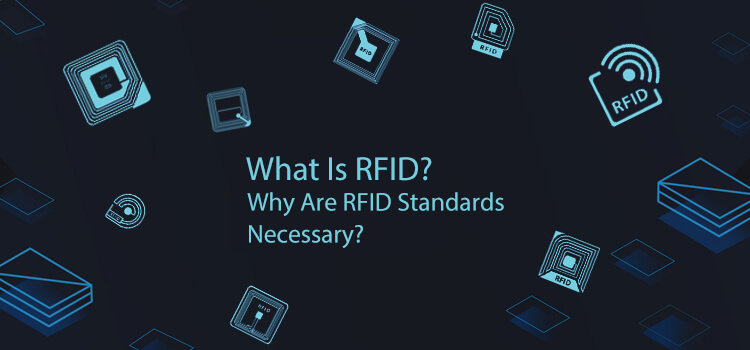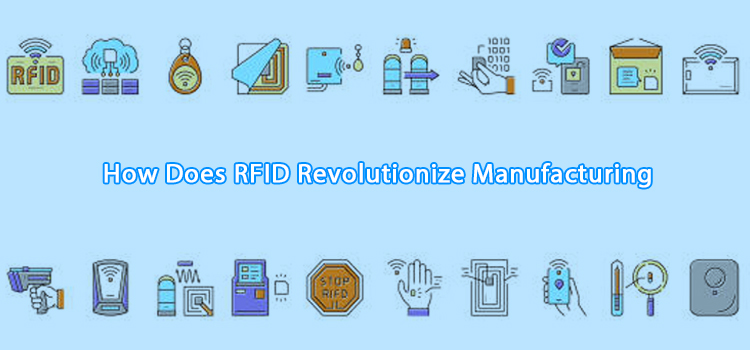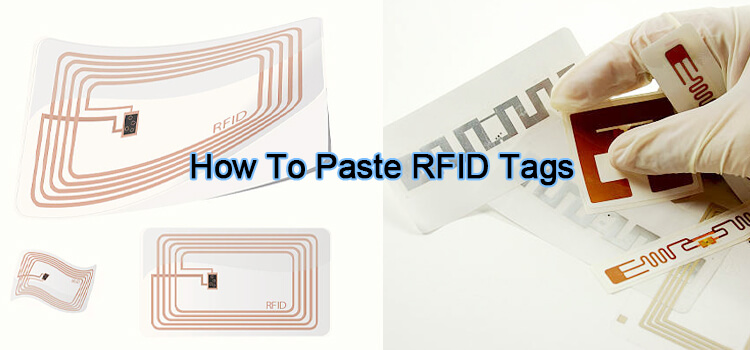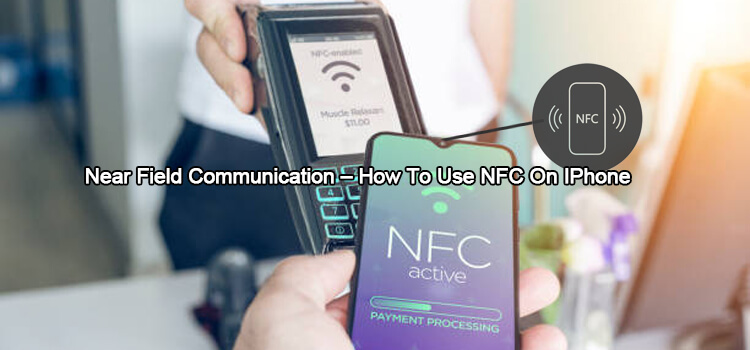RFID standards refer to a set of guidelines and protocols that RFID manufacturers must follow. These specifications ensure that all the devices produced in one industry are compatible with other industries’ equipment.
As such, a worldwide network of different RFID systems becomes possible. For example, an RFID tag compliant with the ISO 14443 standard (proximity) would communicate with an RFID reader compliant with ISO 15693 standard (vicinity).
What is RFID?
RFID stands for Radio-frequency identification. It uses radio waves to identify an object, or individual, without having to make contact with it.
The RFID tag needs to be within the reading range of the reader, which can be up to several meters away. The tag contains an electronic chip and an antenna. The chip stores unique information, which it transfers to the reader when prompted by a radio signal from the reader.
Once the reader receives the information, it is analyzed, and the object is identified within a second.
Why Are RFID Standards Necessary?
RFID standards are necessary to allow interoperability between different RFID systems. Here is a detailed analysis of the benefits of RFID standards:
- Interoperability. Standardization allows devices and systems to work together. This means that users of different RFID systems can create a network. This way, the equipment of one company will work with that of another.
- Cost-efficiency. With interoperability, it becomes possible to use industry resources efficiently. For example, by using computers and other peripherals across an enterprise, companies will only purchase these items once.
- Reliability. Industry resources that meet industry-wide standards will work more efficiently with existing infrastructure. In other words, these devices will be able to provide a return on investment for a company because they can be used several times before being replaced.
- Affordability. Standards allow industry resources to be produced on large scale. For example, RFID chips manufacturer can produce billions of chips and sell them to different RFID tag manufacturers. If each manufacturer were to have its specifications, it would lead to the production of many batches differently, which would lead to a high cost of production.
- Compliance. Meeting standards brings an added advantage of compliance with regulations such as those set by the ISO 9000 series, safeguarding consumer confidence in the quality, and safety of RFID systems throughout the world.
RFID Standards Regulation Bodies
The regulations are set by different RFID standards bodies such as the International Organization for Standardization (ISO), European Telecommunications Standards Institute (ETSI), Electronics Product Code Global Incorporated (EPCglobal), and Electronic Industries Alliance (EIA).
RFID Standards – In-Depth Analysis
Several RFID protocols exist. Here are the most important ones:
ISO/IEC 18000 Series
ISO/IEC/JTC developed ISO/IEC 18000 series to regulate the RFID industry. It has several parts as described below:
- 18000-1 (General). This part describes the general principles of RFID systems, including terminology used in various specifications.
- 18000-2. This part specifies the air interface standard for devices operating below 135 kHz. It specifies two types of tags – Type A (FDX – 125 kHz) and Type B (HDX – 134.2 kHz). It defines the physical layer between the tag and the interrogator, protocols, and anti-collision methods.
- 18000-3 (Proximity). This part specifies the logical data structure used for proximity cards. It describes non-contact related applications such as tag registration and verification of electronic documents. It highlights the collision detection/prevention methods.
- 18000-4. This part specifies the air interface standard for all devices operating in the 2.45 GHz scientific, industrial, and medical (ISM) band. It defines modulation methods, data transfer rates, physical characteristics of the air interface, radio spectrum usage, antenna types and properties, electromagnetic compatibility, and environmental conditions.
- 18000-6. This part defines the air interface standard for devices using 860 to 960 MHz. It defines collision arbitration methods, protocols & commands, and interrogator-tag interactions.
- 18000-7. This part defines the logical data structure used for all devices operating in the 433 MHz frequency band. It supports 18000-1 non-contact system equipment.
ISO/IEC 14443
This standard was developed by the ISO/IEC Joint Technical Committee for identification cards. It has several parts, including:
- ISO/IEC 14443-1:2018. This part defines the physical characteristics of RFID cards. It supports ISO/IEC 7810 and ISO/IEC 15457-1.
- ISO/IEC 14443 -2: 2016. This part specifies the radio-frequency power & signal interface for bi-directional communication between proximity cards & proximity coupling devices.
- ISO/IEC 14443-3:2018. This part defines anti-collision and initialization protocols for proximity cards/objects (PICCs) getting into the proximity coupling devices (PCD). It includes the frames, timing, and the byte format used.
- ISO/IEC 14443-4:2018. This is a transmission standard that defines several features, including activation and deactivation sequence.
This regulation standard works with Type A and Type B cards (Both use a 13.56 MHz frequency band). The difference between the two comes in the modulation methods, protocol initialization, and coding schemes.
They both use ISO/IEC 14443-4:2018 protocol that defines multi-activation, data block chaining, and waiting time extension.
Some of the cards regulated by the ISO/IEC 14443 series include MIFARE Cards, NFC Cards, EMV payment cards, and Biometric passports.
ISO/IEC 15693
This standard regulates the use of vicinity cards (cards with more read distance than proximity cards). These cards are mostly passive – they get power from the reader’s radio waves.
They operate at the 13.56 MHz band, with a read distance of up to 1.5 meters. As such, the required magnetic field is lesser (0.15-5 A/m) than proximity cards (1.5-7.5 A/m).
ISO/IEC 15693 specifies the data structure (frame format) for this kind of card. It defines the initialization methods, modulation schemes, and coding techniques.
ISO 11784/11785
These standards are used to regulate the use of RFID in animal identification. It includes standards for thermal transfer, RFID transponders, and animal tags. The tags operate at a 134.2 kHz band.
The standards specify how to activate transponders and the transfer of the data to a transceiver. The standard includes code structures, modulation schemes, coding techniques, and physical dimensions.
EPC Gen 2 Standards
This series defines the communication & data transfer protocols that RFID tags use to communicate with readers. It uses the EPC (Electronic Product Code) standard as its backbone.
To create a standard that can be used with tags and readers from different manufacturers, the EPC global association has divided the features into several parts.
Each part covers a certain aspect of RFID communication. For example, one part defines how to add encryption to tag-to-reader data transfer protocols while another part specifies how to add collision avoidance techniques to reader-to-tag protocols.
Related Articles
- What Is NDEF Format?
- A Guide About Different Types Of RFID Tags
- 6 NFC Forum Types You Need To Know
- NFC Vs. RFID: What’s The Difference Between Them?
- LF, HF, And UHF Frequency: What’s The Difference?
- Everything You Need To Know About RFID Chip
- A Guide To Buying RFID Tags & Equipment
- Most Complete Guide To Custom Smart Cards
- NFC Vs. Bluetooth: What Is The Difference?





